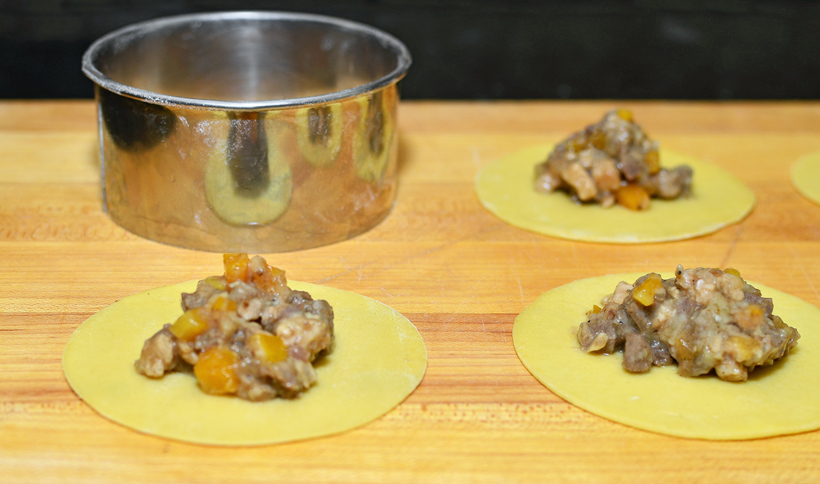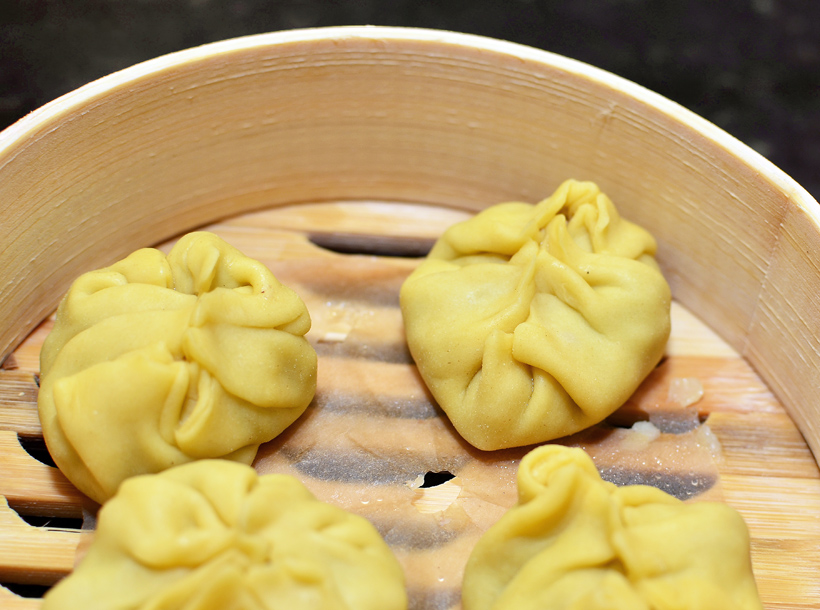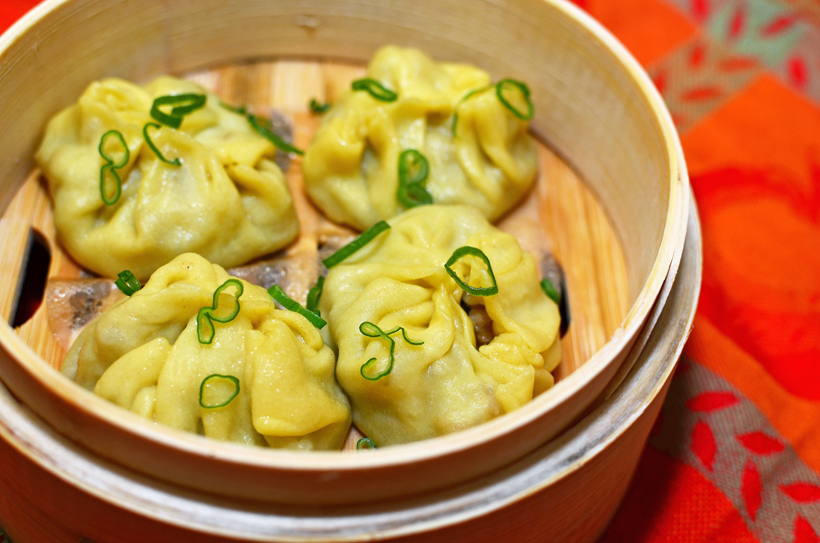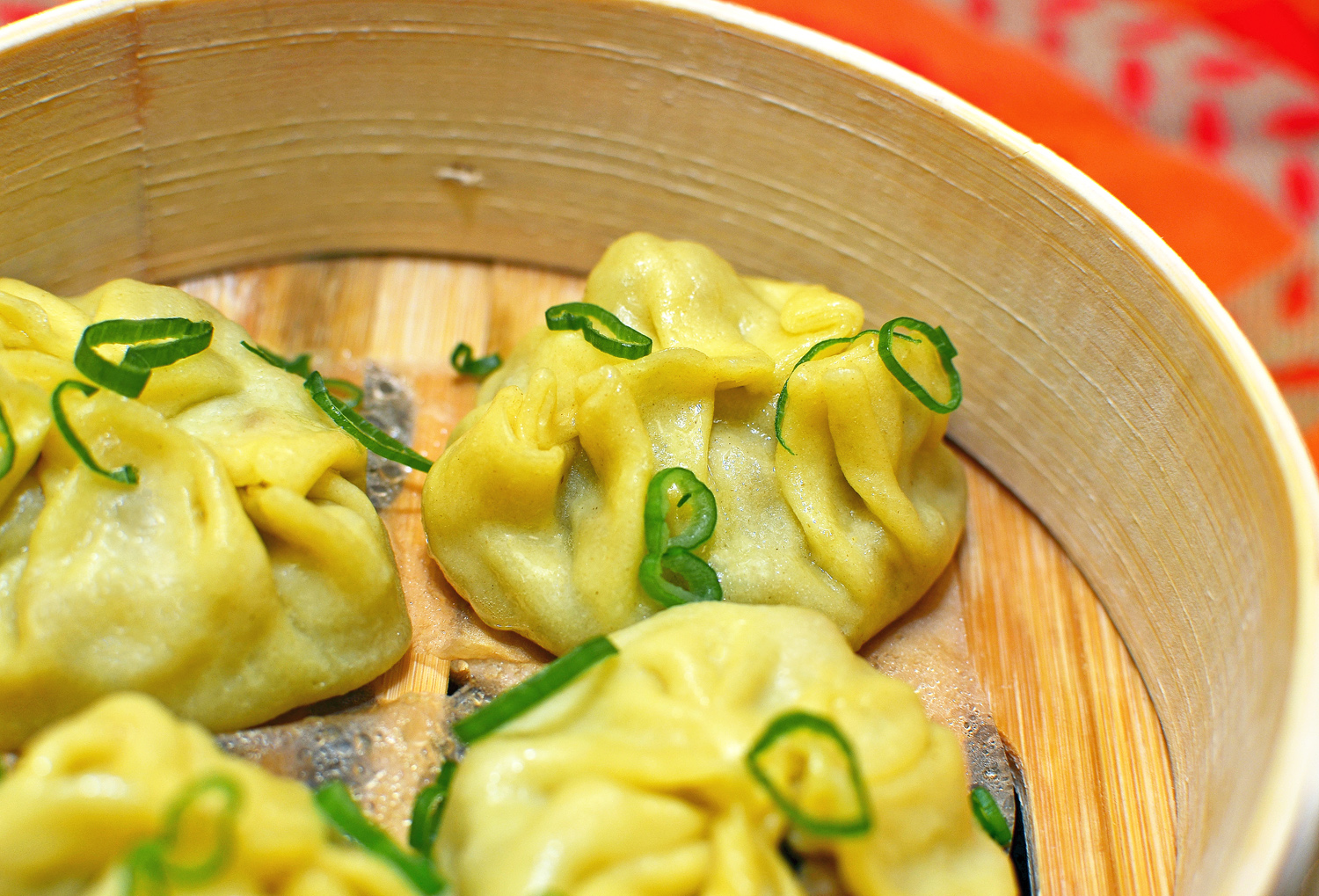On my way to Moldova this past summer, I decided to brave the Russian bureaucracy (the eternal visa schemes) and traffic jams (2 hours from Sheremetyevo Airport) to spend one evening in Moscow. To make it count, I looked for restaurants serving cuisine that I was unlikely to eat anywhere else in the foreseeable future — this excluded the many Georgian and Uzbek joints. I found a small handful of Kazakh and Tatar restaurants, but the place that captured my attention served Buryat cuisine.

Located in the former space of an iconic Soviet jazz club, restaurant Selenge calls itself a Buryat-Mongolian restaurant. The Republic of Buryatia is an area of Russia that borders Mongolia, and indeed their two cuisines are very similar — one difference being that Buryats prepare several dishes with Baikal omul. The food at Selenge was a bit uneven, but one of the better dishes we tried was the buuzy, a local variation on Mongolia’s national dumpling.
It should be noted that in Mongolia, everybody loves buuz (sorry, I love bad puns):
There seem to be several regional recipes, with differences in the meats (lamb, beef, pork, chicken, fat) and vegetables (onion, carrot, cabbage) being used. The Buryat version typically consists of a mixture of beef, pork, onion, and garlic, and at Selenge the dish was served with grated carrot on the side. There are also a few variations on the traditional round purse shape. In addition to the above video, you might want check out this recipe for a slightly different folding method.
I decided to make Mongolian buuzy for the latest round of Ingredient Matcher‘s national dishes competition. The Buryat rendition I’m publishing here prepares the meat filling slightly differently. First, I add carrots to make it a bit more interesting, as the traditional seasoning apparently consists of little more than salt and pepper. Then, I cook the mixture beforehand to make the meat more tender. Since the meat is coarsely chopped by hand, it can be a bit tough if it’s not cooked enough (this is a complaint I often make about manty in Uzbek restaurants). Finally, I prefer rolling the dough very thinly, and then making my dumplings on the smaller side to be able to handle them more easily.

Meat filling
Yields about 30 dumplings
6.5 oz pork blade steak
6.5 oz beef sirloin steak
3 oz peeled carrot
4 oz peeled onion
0.4 oz (about 4 cloves) peeled garlic
1 oz light olive oil
3.8 g (about 1/2 tsp) salt
0.6 g (about 1/4 tsp) ground black pepper
4 oz vegetable stock
- With a sharp knife, cut both meats into 1/4″ small dice (if you want to save some time, you could grind the meat once through the large die of a meat grinder).
- Chop the carrots and onions into small dice as well, and mince the garlic. Sauté all the vegetables with half of the olive oil in a pan over medium heat, and cook until golden brown. Reserve.
- In a pan over high heat, brown the meat in the rest of the olive oil. Reduce the heat to low, add the vegetables, season with the salt and black pepper, and stir for a minute.
- Add the stock, cover with a lid, and simmer over low heat for 30 minutes. Let cool, then transfer to a plastic container, and refrigerate for at least 1 hour.
Buuz dough
Yields about 30 dumplings
6 oz flour, sifted
1/4 tp salt
1 egg
1.5 oz water
- In the bowl of an electric mixer fit with the paddle attachment, place half of the flour, plus the salt, egg, and water. Mix over low speed until homogeneous, scraping down the sides with a spatula.
- Add the rest of the flour and mix again until it forms a smooth paste. Keep mixing for one more minute, then wrap in plastic, and let rest at room temperature for 30 minutes.

Assembly
Yields about 30 dumplings (4 servings)
buuz dough
flour
meat filling
1 tbsp finely sliced scallion greens
- Divide the dough into 4 equal parts to proceed in batches. On a floured surface, roll the dough very thinly. You can use a rolling pin, or a pasta machine (all the way to the thinnest setting).
- Make 3.5″-diameter discs using a cookie cutter. Place a small spoonful of meat filling at the center of each disc. Holding it in the palm of your hand, shape the disc like a purse, and pinch the edges all around the top. The goal is to create folds on all sides to make the dumpling look pretty, and keep the top of the dumpling closed (it is okay to have a tiny bit of filling showing).
- Repeat with the rest of the dough and filling. The dough scraps can be re-rolled to make more dumplings.
- Place the dumplings on a steamer insert lined with parchment paper, and steam in a closed pot for 15 to 20 minutes, depending on the thickness of the dough. If you don’t have a “dedicated” steamer, there are plenty of ways to make your own — Google is your friend.
- Sprinkle the dumplings with scallions, and serve immediately.



2 comments
my Buryat/Tibetan neighbors call those “pozy” (“po-zzy”). They say ppl mostly use homemade roughly ground meat w/onions, Chopped meat like in “manty” is more traditional, though. otherwise, exactly like in the recipee. Pelmeni/pozuy-making party is an awesome communal activity in winter months!
Looks like pozy is the russification of buuzy: http://ru.wikipedia.org/wiki/%D0%9F%D0%BE%D0%B7%D1%8B